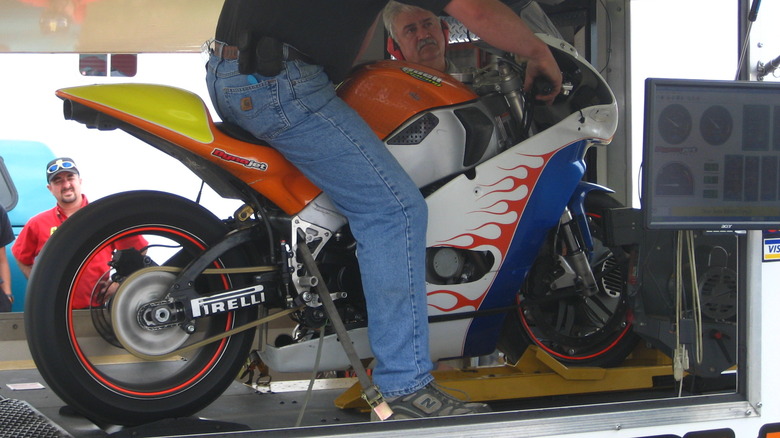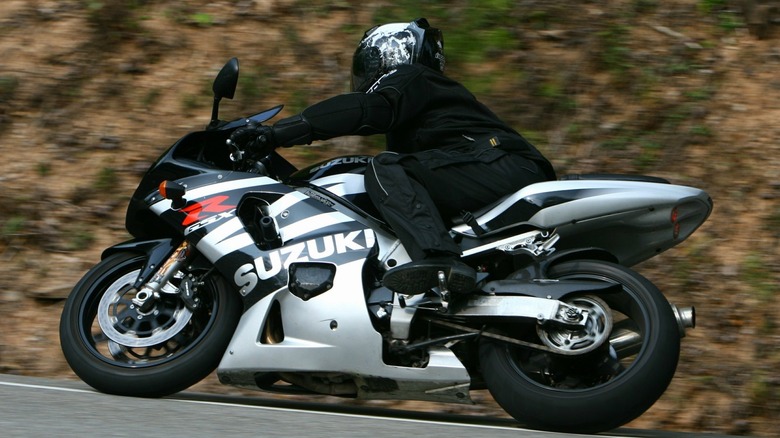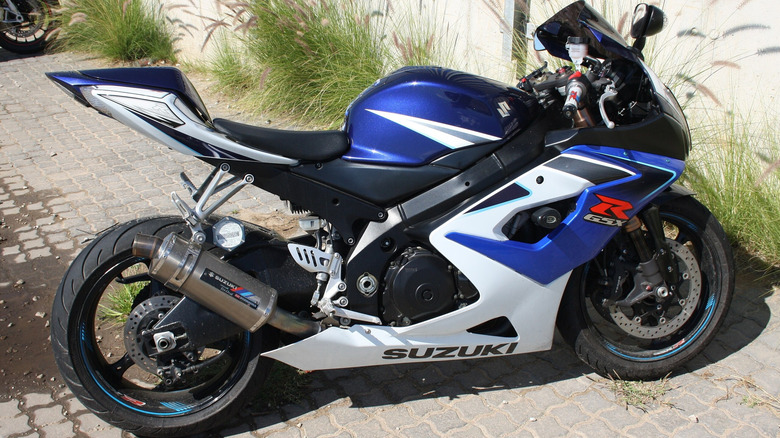What Is Dyno Motorcycle Tuning And Is It Worth It? Here's What Riders Have To Say
Once you get into performance tuning a two-wheeler, you'll hear a lot of talk about motorcycle dyno tuning. Simply put, a dyno tune is the difference between two performance-tinkered motorcycles off the mark — one will pull harder than the other from naught to sixty. In the world of performance motorcycles, that makes all the difference.
Dyno motorcycle tuning adjusts a two-wheeler's air supply, ignition, and fuel to achieve the highest possible power output while maintaining its air-fuel ratio. It's a step you wouldn't want to miss in your journey to increase a motorcycle's horsepower, especially after installing aftermarket performance parts.
Tuning is a bit more complicated than just plugging your motorcycle ECU into computer software and making your bike faster. To achieve a bike's highest performance potential, you'll need a dynamometer machine. The dynamometer, or "dyno," assesses a motorcycle's tune by placing the bike in different load parameters, measuring the results, and making adjustments to the tune.
What motorcycle dyno tuning does for your bike
Word around bike enthusiast circles is that dyno motorcycle tuning is only suitable for performance bikes. This couldn't be further from the truth: For starters, dyno tuning does much more than increase power — it also can improve fuel economy and engine temperature regulation.
When a bike is placed on the dynamometer, its peak power is measured as it goes through the gears. The technicians will go through the gears, noting the air-fuel ratios and where the motorcycle experiences drops in power. Based on the resulting graph, adjustments are made to either restrict fuel or add more air (or both). The process is repeated several times until optimal power ratios are achieved.
So, who needs a dyno tune? Well, if you've put any add-ons on your motorcycle, like a performance air filter or exhaust, the stock air-fuel ratio will be altered, affecting your bike's performance. A dyno tune could also help inspect a bike's health, including tachometer calibration and cam timing, and even detect hidden issues like lean fuel mixtures.
Is a bike dyno worth it?
A proper dyno tune with the correct air-fuel ratios will make a bike run cooler, faster, and for a longer time. However, even with the promised perks, the cost-to-benefit ratio, especially for stock bikes, can make riders question whether it's truly worth it. Some riders, however, were pleasantly surprised by how their bike rode after the dyno:
"Rider's Choice [dyno'd] my bike and the throttle response/power delivery was crisp after the tune. I remember thinking 'Why ... didn't I do this sooner?'" a rider shared on an Ontario-based motorcycle forum. "You could always just get your ECU reflashed, but a dyno run with the reflash is best ... it is expensive," a user noted on Reddit. One Redditor also specified that "An ecu flash is never going to be as good as a proper dyno session done by someone with experience."
Motorcycle dyno tunes have a ton of benefits, especially when it is tailored to specific modifications you are running. But like all good things, they have their drawbacks. For starters, they aren't cheap considering all the labor hours that go into making adjustments after each graph reading. Add that to supporting upgrades, and you are looking at anything between $200 and $500. And while there's the potential to get a bump in horsepower — between 8-10 horsepower on built or modified bikes — the same benefits are not guaranteed on stock bikes.


